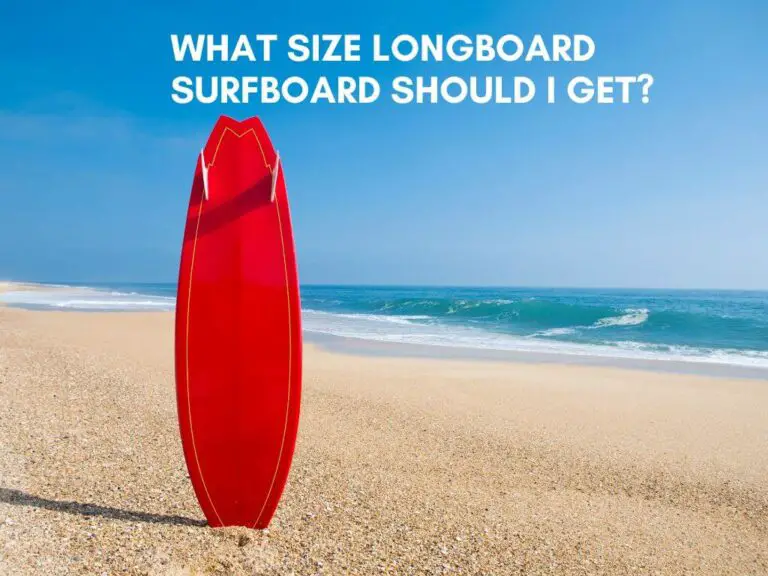If you’ve ever wondered, what is a longboard, you’re not alone. Longboarding has surged in popularity as a fun, practical, and stylish way to get around, but it’s more than just a longer skateboard. Whether you’re a beginner looking to cruise smoothly or an adrenaline junkie seeking downhill thrills, understanding what a longboard is and how it differs from other boards is the first step to unlocking its potential.
In this guide, we’ll break down everything you need to know about longboards—from their unique design and uses to why they’ve become a favorite for commuters, surfers, and skaters alike. Get ready to dive into the world of longboarding and discover why this versatile ride is taking the streets by storm!
History of Longboarding
The origins of longboarding can be traced back to the 1950s and 1960s, when surfers in California sought to recreate the feeling of riding waves on land. These early longboards were often made from wood and had a similar shape to surfboards, allowing riders to mimic the smooth, flowing movements of surfing.
Over the years, the design and technology of longboards have evolved significantly. Today, longboards come in a wide range of shapes, sizes, and materials, catering to the diverse needs and preferences of riders. The sport has also gained a dedicated following, with thriving communities and events around the world.

Types of Longboards
Longboards come in a variety of styles and designs, each suited for different riding styles and terrains. Here are some of the most common types of longboards:
- Cruiser Longboards: Designed for casual, everyday riding, cruiser longboards are typically shorter and more maneuverable, making them ideal for commuting, leisure rides, and navigating urban environments.
- Downhill Longboards: These longboards are optimized for high-speed, downhill riding. They feature a lower, more stable platform and larger, softer wheels to provide the necessary control and grip for descending steep hills.
- Freeride Longboards: Freeride longboards strike a balance between cruising and downhill, offering a versatile riding experience. They are often used for carving, sliding, and performing various tricks and maneuvers.
- Pintail Longboards: Pintail longboards have a distinctive tapered shape, resembling the outline of a surfboard. They are known for their smooth, surfy feel and are popular among riders who want to emulate the sensation of surfing on land.
- Drop-Through Longboards: Drop-through longboards have a unique design where the deck is mounted through the trucks, resulting in a lower center of gravity and improved stability, making them ideal for both cruising and downhill riding.
Longboard vs. Skateboard: What’s the Difference?
While longboards and skateboards may appear similar at first glance, there are several key differences between the two:
- Size and Shape: Longboards are typically larger, longer, and wider than skateboards, with a more streamlined and stable design.
- Wheels: Longboards have larger, softer wheels compared to the smaller, harder wheels found on skateboards, providing a smoother and more comfortable ride.
- Riding Style: Longboards are primarily used for cruising, commuting, and downhill riding, while skateboards are more focused on tricks, stunts, and park riding.
- Stability and Control: Longboards are generally more stable and easier to control, making them a more accessible option for beginners and those seeking a relaxed riding experience.
Benefits of Longboarding
Longboarding offers a wide range of benefits that make it an attractive activity for people of all ages and skill levels. Here are some of the key advantages of embracing the longboarding lifestyle:
- Improved Fitness and Well-Being: Longboarding is a low-impact, full-body workout that can help improve cardiovascular health, muscle tone, and overall fitness.
- Stress Relief and Relaxation: The smooth, flowing movements and the sense of freedom that comes with longboarding can be incredibly therapeutic, helping to alleviate stress and promote a sense of calm.
- Eco-Friendly Transportation: Longboards can serve as a sustainable, emission-free mode of transportation, making them a great alternative to cars or public transportation for short-distance commutes.
- Socialization and Community: Longboarding has a thriving global community, with events, meetups, and groups that offer opportunities to connect with like-minded individuals and share the passion for the sport.
- Skill Development: Mastering the art of longboarding requires the development of various skills, such as balance, coordination, and risk management, which can be transferable to other areas of life.
Factors to Consider When Choosing a Longboard
Selecting the right longboard can be a daunting task, as there are numerous factors to consider. Here are some of the key elements to keep in mind when choosing the perfect longboard:
Choosing the Right Longboard Deck
The deck is the foundation of a longboard, and it’s essential to choose one that suits your riding style and preferences. Consider the following factors when selecting a longboard deck:
- Length: Longboard decks typically range from 30 to 50 inches in length. Shorter decks are more maneuverable, while longer decks offer greater stability and speed.
- Width: The width of the deck can affect the stability and control of the longboard. Wider decks are generally more stable, while narrower decks are more agile.
- Shape: Longboard decks come in a variety of shapes, including pintail, drop-through, and drop-down, each with its own unique characteristics and riding experience.
- Material: Longboard decks can be made from a range of materials, such as wood, composite, or even carbon fiber, each with its own strengths and properties.
Longboard Trucks and Wheels: What to Look For
The trucks and wheels are crucial components that significantly impact the performance and handling of a longboard. When selecting these parts, consider the following factors:
- Trucks:
- Truck Hanger Width: Ensure the truck width matches the deck width for optimal stability and control.
- Truck Baseplate Angle: The baseplate angle affects the turning radius and responsiveness of the longboard.
- Truck Bushing Durometer: Softer bushings provide a more responsive and agile ride, while harder bushings offer greater stability.
- Wheels:
- Wheel Diameter: Larger wheels (70mm+) provide a smoother ride and higher top speed, while smaller wheels (60mm-) offer better maneuverability.
- Wheel Durometer: Softer wheels (78a-86a) offer more grip and a more comfortable ride, while harder wheels (87a-101a) are better suited for high-speed downhill riding.
- Wheel Shape: Different wheel shapes, such as rounded or square-lipped, can affect the longboard’s performance and sliding characteristics.
Longboard Bearings and Grip Tape
Bearings and grip tape are two additional components that can significantly impact the overall performance and feel of a longboard.
- Bearings:
- Bearing Quality: Higher-quality bearings with ABEC ratings of 5 or higher will provide a smoother, faster, and more efficient ride.
- Bearing Lubrication: Regular cleaning and lubrication of bearings can help maintain their performance and longevity.
- Grip Tape:
- Grip Tape Texture: Coarser grip tape provides more traction and control, while smoother grip tape offers a more comfortable feel.
- Grip Tape Customization: Customized grip tape designs can add a personal touch to your longboard.

Longboard Maintenance and Care
Proper maintenance and care are essential for ensuring the longevity and optimal performance of your longboard. Here are some tips to keep your longboard in top shape:
- Cleaning: Regularly clean your longboard, including the deck, trucks, and wheels, to remove dirt, debris, and built-up grime.
- Lubrication: Apply a small amount of lubricant to the bearings and pivot cups of the trucks to maintain smooth, responsive operation.
- Tightening: Periodically check the tightness of the trucks, wheels, and hardware, and make adjustments as needed to maintain a secure and stable ride.
- Storage: Store your longboard in a dry, cool place, away from direct sunlight, to prevent damage to the deck and components.
- Replacement: Replace worn or damaged components, such as wheels, bearings, or grip tape, to ensure optimal performance and safety.
Longboarding Safety Tips
Safety should always be a top priority when it comes to longboarding. Here are some essential safety tips to keep in mind:
- Wear Protective Gear: Always wear a helmet, gloves, elbow pads, and knee pads to protect yourself in the event of a fall or collision.
- Ride Within Your Limits: Start slow, practice in safe areas, and gradually build up your skills and confidence before attempting more challenging maneuvers or terrain.
- Familiarize Yourself with the Terrain: Inspect the riding area for any obstacles, cracks, or uneven surfaces that could pose a hazard.
- Obey Traffic Laws: When riding on public roads or paths, be aware of your surroundings and follow all applicable traffic laws and regulations.
- Learn Proper Braking Techniques: Master the art of controlled braking to ensure you can stop safely in any situation.
Where to Buy Longboards
Longboards can be purchased from a variety of sources, including:
- Specialty Longboard Shops: These dedicated stores offer a wide selection of longboards, components, and accessories, along with knowledgeable staff who can provide personalized recommendations and advice.
- Online Retailers: Many online stores, such as e-commerce platforms and brand-specific websites, offer a vast selection of longboards and related gear, often with the convenience of home delivery.
- Local Skateboard Shops: Some traditional skateboard shops may also carry a range of longboard options, catering to the growing popularity of the sport.
Longboarding Communities and Events
The longboarding community is vibrant and welcoming, with numerous events and gatherings that bring enthusiasts together. Here are some examples of where you can connect with other longboarders:
- Local Longboard Meetups: Check for longboarding clubs or meetup groups in your area, where you can join group rides, participate in workshops, and share your passion with like-minded individuals.
- Longboarding Festivals and Competitions: These large-scale events feature a variety of longboarding disciplines, including downhill racing, freeride demonstrations, and freestyle competitions.
- Online Longboarding Forums and Social Media: Engage with the global longboarding community through online forums, Facebook groups, and social media platforms to share experiences, seek advice, and stay up-to-date on the latest trends and developments.
Conclusion
Longboarding is a thrilling and versatile activity that offers a unique blend of enjoyment, fitness, and community. Whether you’re a seasoned rider or a newcomer to the sport, this comprehensive guide has provided you with the essential information to understand what a longboard is and how to choose the perfect one for your needs.Ready to embark on your longboarding journey? Explore our wide selection of high-quality longboards and accessories to find the perfect fit for your riding style and preferences. Visit our online store or visit your local specialty longboard shop to get started on your adventure today!

FAQ’s
What is the difference between a longboard and a skateboard?
The main difference between a longboard and a skateboard is their size and purpose. Longboards are longer and wider than skateboards, typically measuring between 38 and 60 inches in length compared to skateboards’ 28 to 34 inches. This increased size makes longboards more stable and ideal for cruising, carving turns, and downhill riding.
Why do people use longboards?
People use longboards for various reasons, including:
Transportation: Longboards are a convenient and eco-friendly way to commute or get around town.
Recreation: Longboarding is a fun and enjoyable outdoor activity that can be enjoyed by people of all ages and fitness levels.
Exercise: Longboarding is a great way to get some exercise and improve your balance and coordination.
Thrill-seeking: Some people enjoy the thrill and adrenaline rush of downhill longboarding or performing tricks.
Relaxation: Longboarding can be a relaxing and meditative experience, allowing you to clear your mind and enjoy the scenery.
Are longboards harder to ride?
Longboards are generally considered easier to ride than skateboards, especially for beginners. Here’s why:
Stability: Longboards have a wider and longer platform, making them more stable and easier to balance on.
Softer wheels: The softer wheels on longboards provide a smoother ride and absorb shocks better.
Less maneuverability: While longboards are easier to balance, they are less maneuverable than skateboards, which can be a benefit for beginners.
What is the difference between a cruiser and a longboard skateboard?
Cruiser and longboard skateboards are both designed for cruising, but they have some key differences. Cruiser boards are typically shorter and have a wider wheelbase, making them more maneuverable and easier to carry around. Longboards, on the other hand, are longer and have a narrower wheelbase, which provides better stability and speed. Cruiser boards are often used for commuting or short trips, while longboards are better suited for downhill riding, carving turns, and longer distances.








